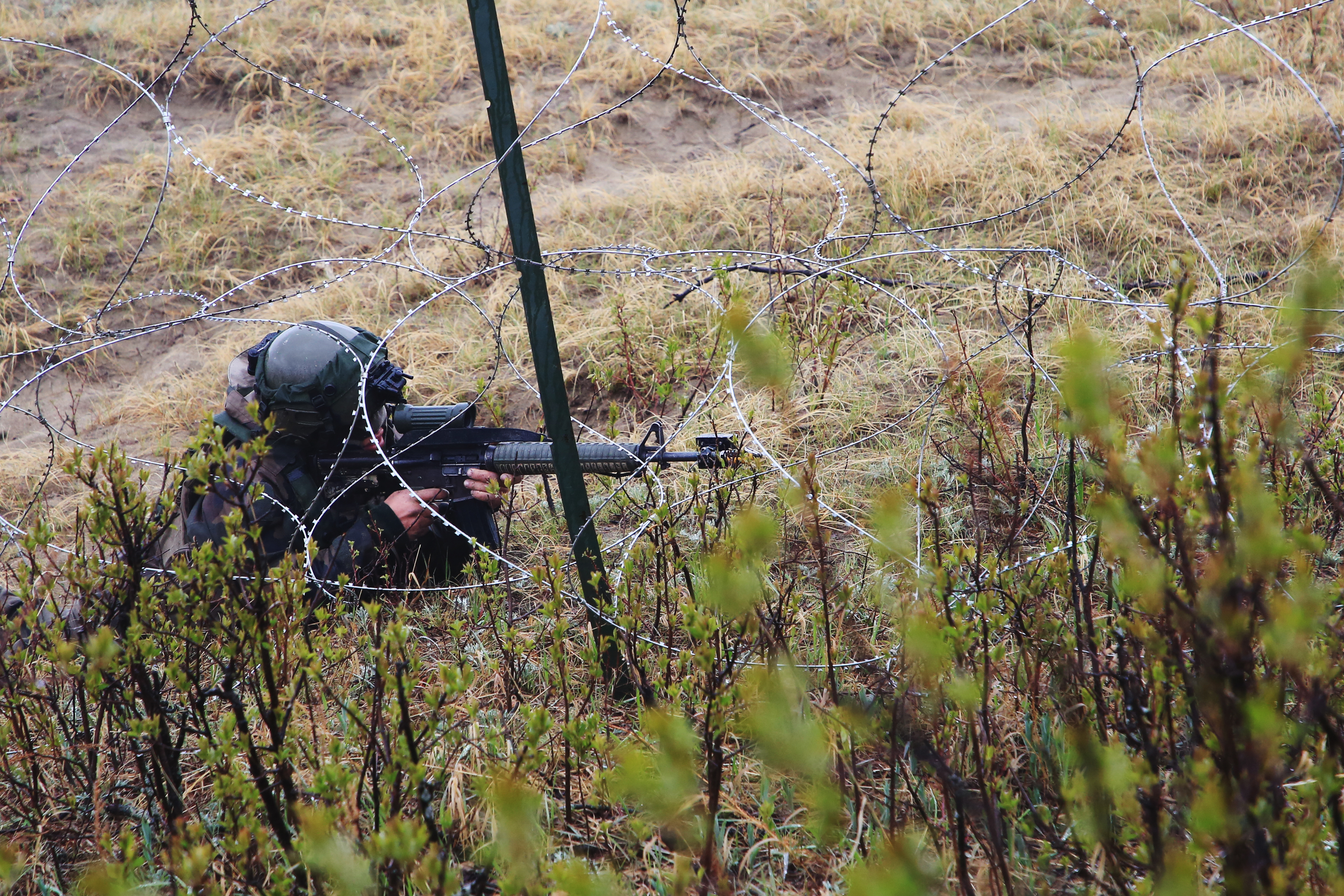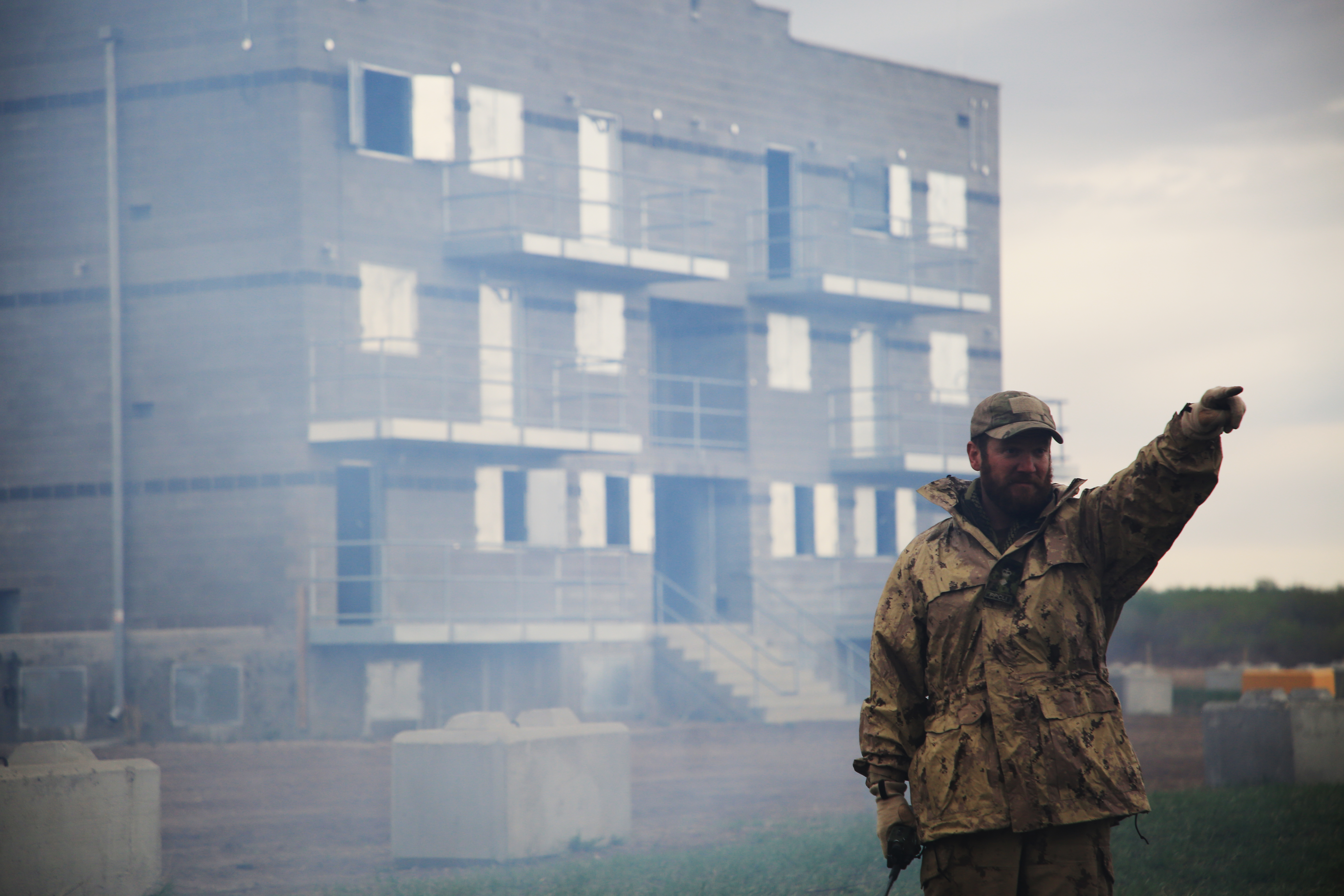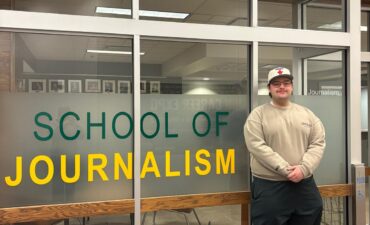In rural Alberta, the scene is set. Shipping containers are set up as mock buildings as people hired as paid actors are pretending to be civilians, leaders, police, and more.
During one of the training battles of Exercise Maple Resolve 19, the Spring air is chilly and rain starts to sprinkle down. The battle starts quietly until the sounds of LAV6s echos around as they come up over the rolling hills.
Actors pretending to be citizens of the town that makes up the battleground are crouched in the shipping containers as actors pretending to be media ran around to get the perfect shot.
This scene and the training battle to follow have been weeks in the making. The exercise runs throughout the training grounds of the Wainwright-based Canadian Maneuver Center. Canadians, British forces, French forces, and Americans all participated from May 8 to 24, 2019.



The infantry officers begin to flank the ‘rebels’ or OP-COR (opposing forces). A non-hazardous smoke bomb is thrown and covers the town in a white haze. This provides cover for the Canadian forces to get into position.
While watching from a-top a shipping container, the scene looks and sounds as though it could be real. The facade is mainly broken by the large line of officers watching from the sidelines and occasionally yelling instructions.
The training battle is similar to a massive laser-tag game. To create realism, the gun they’re using are filled with blanks. When they pull the trigger, the movement of the barrel activates a mounted laser. The beam can accurately predict where a bullet is fired and if it would kill, injure, or graze the person it’s fired at.


The battle winds down as one-by-one the opposing forces are ‘hit’ and the men lie down on the ground. The observing officers chuckle as some officers ‘die’ dramatically as they fall.
Back at the tents where I and a handful of other journalist trainees were staying with the officers, the mood was in good spirits after the exercise. Even in the light rain, officers went about without complaint doing their general duties.
When we first arrived at the military camp as part of the Military Journalism Scholarship, it felt like being a tourist in a place where everyone hates tourists. The officers didn’t hate the media but the sense of distrust was palpable.



An hour after arriving, I decided it was best to leave the camera and recorder in the tent and learn. When looking at the history of media and the military, there hasn’t always been the best relationship. After all, the media is meant to hold the military to account, something that can seem as though the media is spinning stories a specific way when in reality they’re showing the truth, even if it’s hard to hear.
The point of attending the University of Calgary Military Journalism Scholarship wasn’t to have a breaking news story, instead, it was to learn. As a recent graduate from Saskatchewan, I thought it was best to learn about the military before being able to report on officers and military operations. For example, It’s difficult to report on something if you don’t know what CMBG means. (Canadian Mechanized Brigade Group).



To learn about the officers while they didn’t enjoy having someone new in their space, it took time to build up their trust.
We talked about cards, frisbee, games, sleep, who snored the loudest in the tent, who ate the most food, and about each of their lives leading up to all being there together. We shared stories of our tattoos and jokes about our families.
Slowly, my understanding of the officers and their understanding of who I was began to change. We talked weapons as I had done my PAL training not too long ago, and have been looking to do my restricted firearms course in the future.
One of the nights, the officers in our tent really opened up. They spoke about how in their opinion, the media doesn’t understand why officers make the choices they do. They don’t understand what it’s like in the real world from the journalist’s little desks. The media then can spin it whichever way they want and the public follows, he thought. And people don’t need to know everything.


I think this is where the biggest difference lies between the military and the media.
Journalists weigh each story against the public interest. If it’s not valuable to the public, we don’t pursue it. Because the military is funded through tax dollars, there are many aspects that are a part of public interest.
However, the more journalists know about the military, the easier it is to be unbiased and have a complete understanding of both sides, as well as gain the trust of the people the journalist is talking to.
After learning about the weapons, the training methods, rations –the food the military eats daily, and some of the personal stories, I feel more confident in my ability to report and be able to accurately tell their side of the story.
From there, the officers should respect the reporter attempting to genuinely learn more about them, show them in an unbiased light, and answer the truth to questions.

Doing this course and seeing the distrust, the time it takes to build relationships, and what’s needed in the job of covering the military, I have never been more sure about my career path.
I believe the public has a right to know what the military is doing, and the military deserves to be represented in an unbiased view. It will take years, but I am looking forward to when I can travel, cover the military, and sleep in tents again.


—————————–
Heidi Atter is a journalist in Saskatchewan. She graduated from the University of Regina Journalism School in April 2019. She has a black-belt in Taekwon-Do, has competed in fencing internationally and kayaking nationally and is always looking for the next adventure. Heidi hopes to be a foreign reporter in the future after building her portfolio through working in Saskatchewan, Canada, and beyond.
This piece is written after Heidi attended the Military Journalism Course through the University of Calgary’s Center for Military, Security and Strategic Studies in May 2019. The course embeds students with a military group near Wainwright, Alberta.











